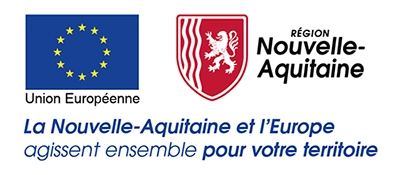As businesses begin to recover in a post-pandemic world, we all have a role to play in building an economically and environmentally sustainable future. To do this, we must be willing to move away from our current linear economy and develop new, circular economies. In practice, this means no longer taking resources from the ground to make products that we ultimately throw away, but instead designing out waste to keep products and materials in use.
The aerospace industry has been particularly hard hit during the pandemic. While analysts anticipate a strong rebound, industry leaders will be acutely aware that they face increased competition for critical metals and raw materials such as titanium, vanadium, niobium, cobalt, and nickel. Over the next decade, as the world drives to meet net-zero emissions targets and significantly reduce the environmental harm we are inflicting on our planet, the electric vehicle and renewable energy industries are set to boom. And these industries also depend on metals such as nickel and cobalt.
A new focus on materials management
Today, aerospace businesses often treat the management of superalloy and titanium revert as an afterthought. This high-value, critical raw material is often referred to as scrap or waste. As a result, its management on manufacturing sites often falls to a facilities manager who deals with it alongside consumables and waste streams.
Furthermore, when a state-of-the-art manufacturing plant is designed and built, no thought is given to how superalloy and titanium revert will be handled and segregated. A lack of consideration—or perhaps understanding—leads designers and architects to assume that this material can be lumped together in large skips with other metal ‘waste.’
Finally, and perhaps worst of all, when designing new alloys for the next generation of aircraft and jet engines, design engineers give no thought to how the material can be processed and returned to melts.
How to maintain the bounce back
If the aerospace industry is to rebound in an environmentally and economically sustainable way, the way we manage material needs to change. The entire supply chain must reduce its dependency on primary critical raw materials through innovation, sustainable products, and the circular use of resources.
At the heart of this approach is a change in how we think about and manage superalloy and titanium revert. The circular use of resources through closed-loop titanium and superalloy supply chains is vital to secure sustainable and responsible domestic sourcing and processing of raw materials.
Maximizing revert recovery through best-practice site segregation and world-class management programs is the key to a resilient closed-loop, circular supply chain.
Arguably, to make a hi-tech superalloy or titanium ingot, 1 kg of IMET fully processed, vacuum-furnace-ready superalloy or titanium revert is better than 1 kg of prime or virgin raw material because:
- Cost Saving
It’s often available to the melter at a discount to the intrinsic value of the alloy they are looking to melt, so costs less than using prime or virgin material.
- Energy Saving and Reduced Environmental Impact
It takes less energy to melt revert than prime, and the return of revert displaces prime. Together, this reduces the demand to mine and refine ore and so has a significant financial and environmental benefit.
- Increased Raw Material Resilience
If you do not have abundant natural resources to mine and manufacture, revert reduces the need to import critical raw materials.
- No Loss of Quality
When you melt revert in furnaces, you achieve an ingot of equal quality to one melted from prime.
Why we need to change the optics
With the benefit and value of revert clear, I believe one of the key reasons the aerospace industry continues to undervalue this hi-tech raw material is optics.
Today, the language used to refer to revert material has connotations of low value and low quality. The material is often described as ‘scrap,’ which implies waste and little or no value. Scrap is more often associated with dirty yards piled high with old cars. Furthermore, processing the material is often referred to as ‘recycling,’ another word often associated with a lower quality product.
I would argue that to communicate the importance and realize the true value of this hi-tech metal material, a new vocabulary is required. We need to recast it using words that are not associated with low value and a loss of quality.
I’m calling on everyone who is a stakeholder in the success of a more sustainable, green, and resilient aerospace industry to adopt a new way of talking and thinking about this valuable raw material.
Here are three simple suggestions:
- Do not refer to this material as ‘scrap.’ Instead, refer to it as ‘revert’ – material to be reverted to the supply chain.
- Use the term ‘reuse’ over ‘recycle.’ Because, when managed and processed correctly, revert can be used to make more of precisely the same product with no loss of value.
- Think of revert as a ‘hi-tech raw material or metal.’
This change in language can support a new way of thinking about the world and how we manage this vital resource, for the benefit of us all.
Article by Ruaraidh Williamson, CEO IMET Alloys

